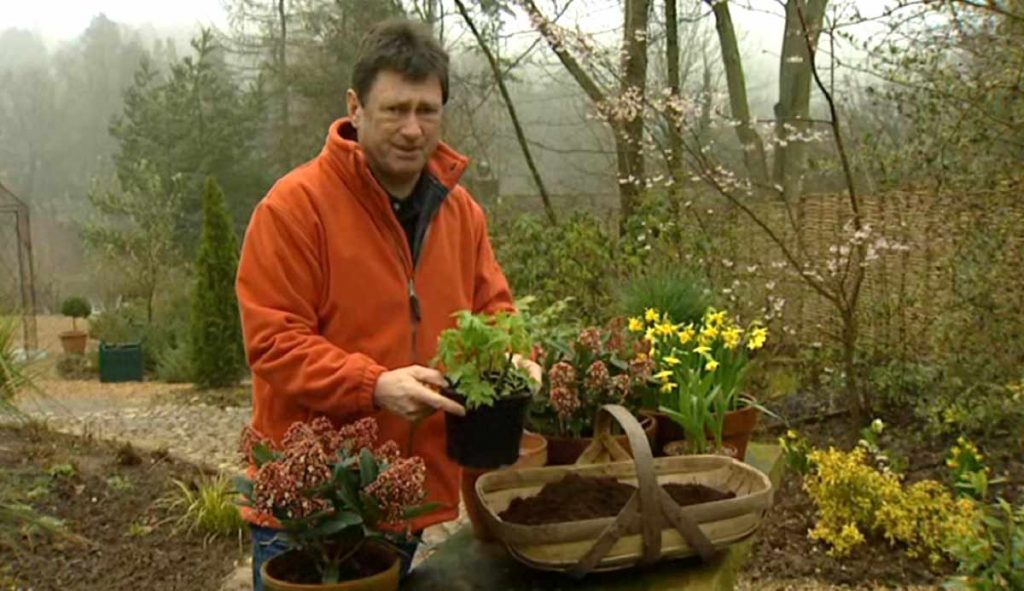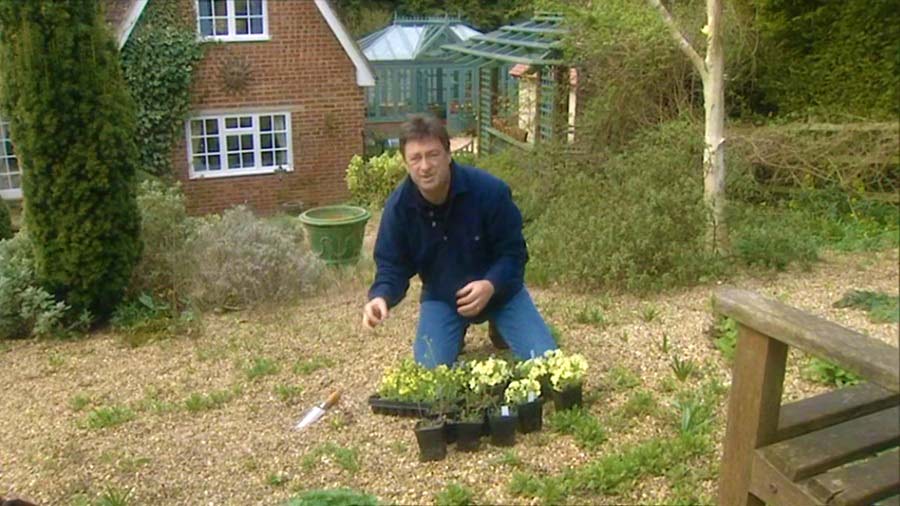Gardeners World episode 2 2002: As spring approaches, Alan Titchmarsh show us how to propagate Delphinium and ferns, Rachel De Thame finds hospitable hosts for clematis and Chris Beardshaw triumphs over clay soil.
Gardening show packed with good ideas, tips, advice from experts and timely reminders to get the most out of your garden, whatever its size or type.
Gardeners World episode 2 2002
Delphinium
Renowned for their clear colours and commanding presence, delphiniums are possibly the ultimate early summer perennial and there are plenty of varieties to choose from. For later flowers, try the annuals (Consolida or larkspur), which are less tall.
Delphinium is a genus of about 300 species of perennial flowering plants in the family Ranunculaceae, native throughout the Northern Hemisphere and also on the high mountains of tropical Africa. The genus was erected by Carl Linnaeus. All members of the genus Delphinium are toxic to humans and livestock.[2] The common name “larkspur” is shared between perennial Delphinium species and annual species of the genus Consolida. Molecular data show that Consolida, as well as another segregate genus, Aconitella, are both embedded in Delphinium.
The genus name Delphinium derives from the Ancient Greek word δελφίνιον (delphínion) which means “dolphin”, a name used in De Materia Medica for some kind of larkspur. Pedanius Dioscorides said the plant got its name because of its dolphin-shaped flowers.
Ferns
Low-maintenance and tolerant of a wide range of soil conditions, ferns complement any shade plant combination. From tiny specimens grown in walls to the royal fern at six feet tall, there’s room for ferns in every sized garden.
Most ferns are easy to grow and will thrive in any moist, well-drained, shady site in well-dug, humus-rich, neutral to alkaline soil. However, those such as the royal fern Osmunda regalis, require neutral to acid soil.
Ferns do not usually require feeding when planted in the open garden, but mulches such as well-rotted farmyard manure will condition the soil and give a boost to growth. Where soil conditions are particularly poor a well-balanced fertiliser, such as Growmore or fish, blood and bone can be added in spring. Water when necessary, but apply to the roots and not directly to the fronds or crown as this can encourage rot.
Ferns make good companions for other hardy perennials in containers. Use a mix of 3 parts peat-free multipurpose compost, 1 part John Innes No 3, and 1 part gritty sand by volume. When first potting the ferns, incorporate a controlled–release fertiliser. The following year use a general fertiliser such Miracle-Gro during the growing season.
Clay soils
Soils rich in fine clay particles are called ‘heavy soils’ and, although hard to manage, are also potentially very fertile when treated in the right way.
Clay is a finely-grained natural rock or soil material that combines one or more clay minerals with possible traces of quartz (SiO2), metal oxides (Al2O3 , MgO etc.) and organic matter. Geologic clay deposits are mostly composed of phyllosilicate minerals containing variable amounts of water trapped in the mineral structure. Clays are plastic due to particle size and geometry as well as water content, and become hard, brittle and non–plastic upon drying or firing. Depending on the soil’s content in which it is found, clay can appear in various colours from white to dull grey or brown to deep orange-red.




